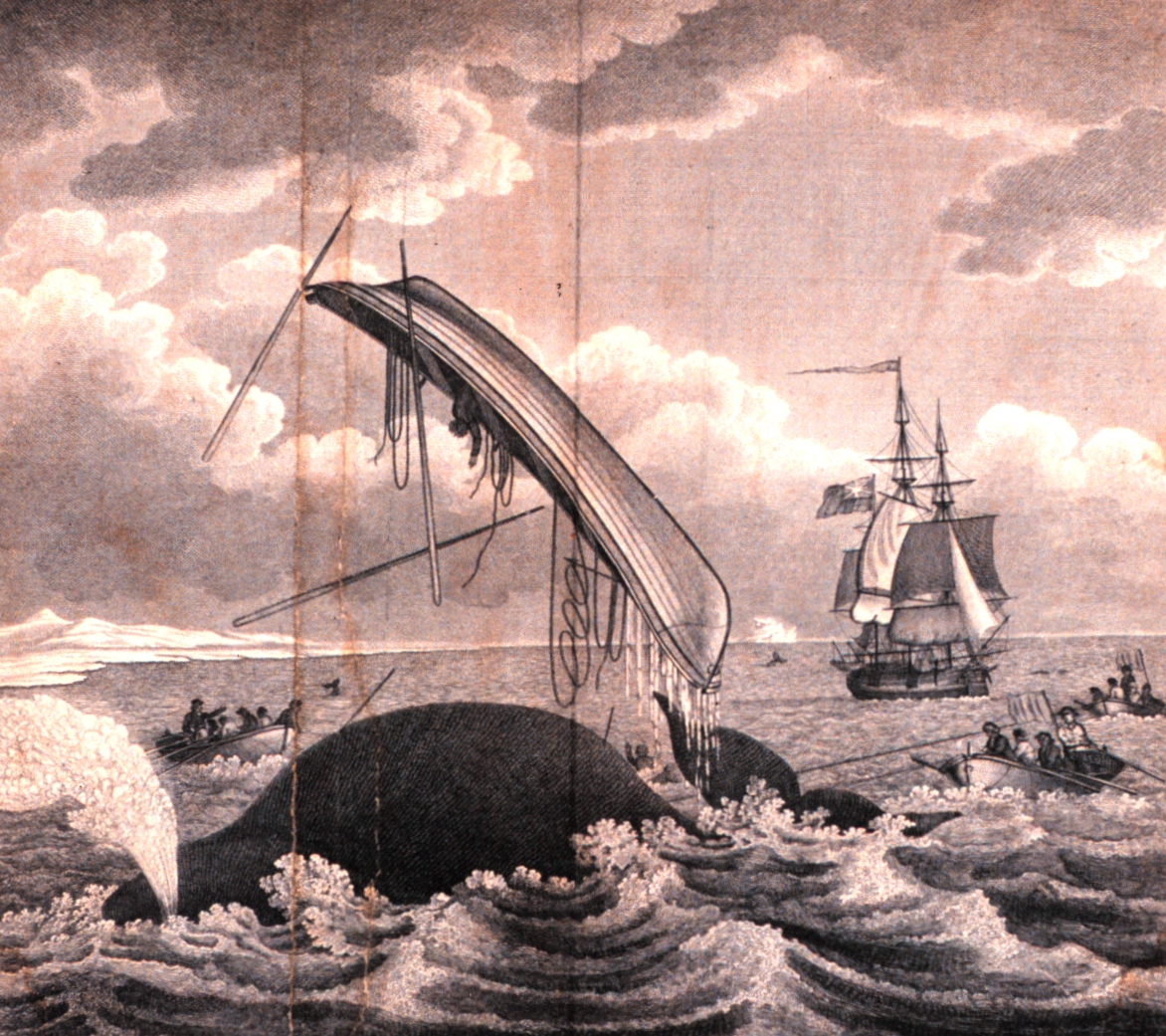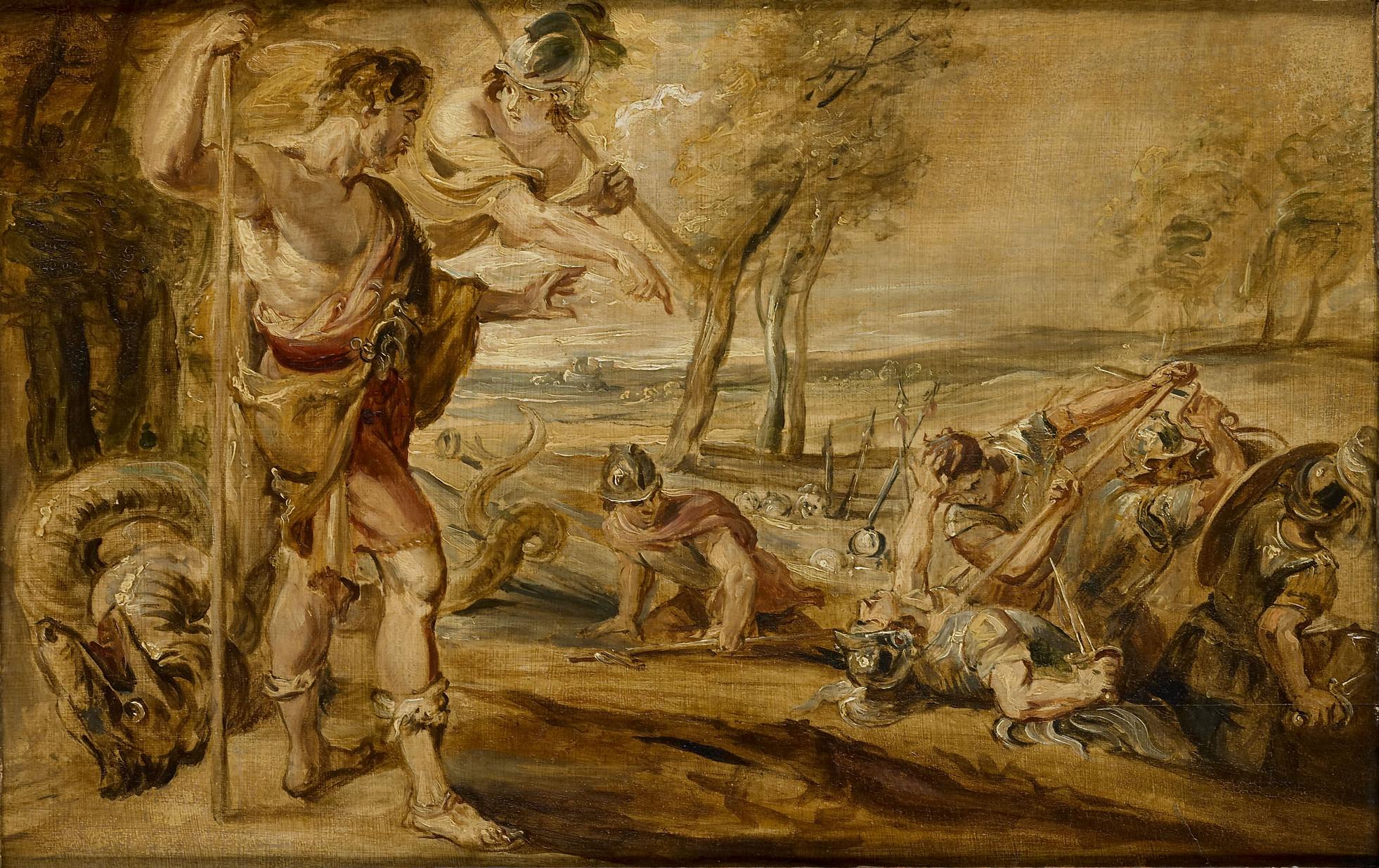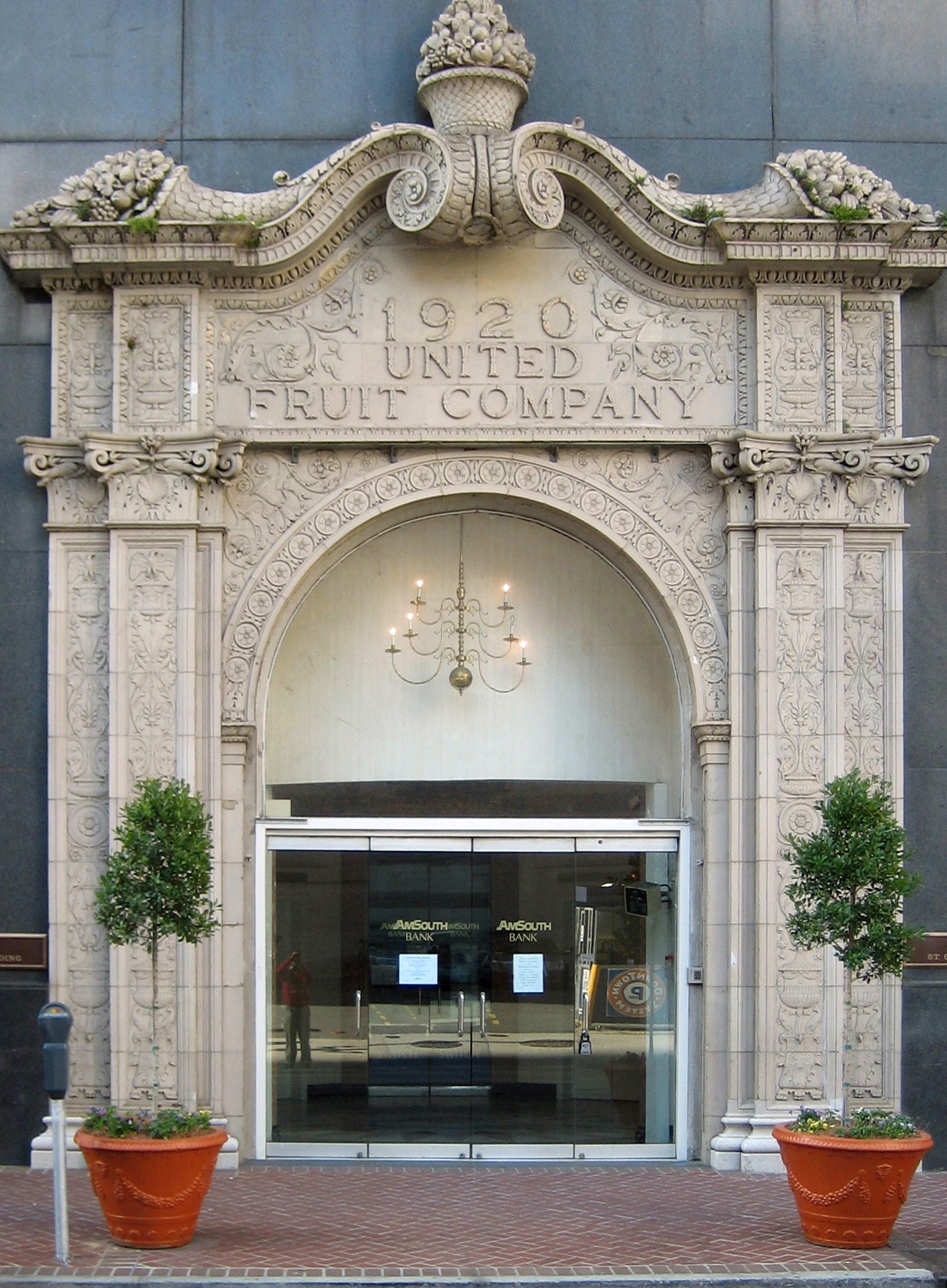|
Cadmus (ship)
Several vessels have been named ''Cadmus''. ''Cadmus'' (1813 ship) was launched in 1813 at Sunderland. She traded with the East Indies under license from the British East India Company (EIC) until 1827. Then between 1827 and 1834 she made two voyages as a whaler in the British southern whale fishery. She was lost in 1835. ''Cadmus'' (1816 ship) was built in 1816 at Medford, Massachusetts. She made five complete voyages as a whaler, one out of Boston (1822–1825), and four out of Fairhaven, Massachusetts (1831–1841). She was lost in 1842 on an uncharted atoll in the Tuamotu Archipelago. ''Cadmus'' (1818 ship) was built in 1818 in New York. She was a packet sailing between New York and Havre. In 1824, ''Cadmus'' carried General Lafayette to New York on a visit at the invitation of the U.S. Congress. From 1827, ''Cadmus'' became a whaler, sailing from Sag Harbor, New York. She made 17 complete whaling voyages. During her whaling years ''Cadmus'' brought in oil and whal ... [...More Info...] [...Related Items...] OR: [Wikipedia] [Google] [Baidu] |
East India Company
The East India Company (EIC) was an English, and later British, joint-stock company founded in 1600 and dissolved in 1874. It was formed to trade in the Indian Ocean region, initially with the East Indies (the Indian subcontinent and Southeast Asia), and later with East Asia. The company seized control of large parts of the Indian subcontinent, colonised parts of Southeast Asia and Hong Kong. At its peak, the company was the largest corporation in the world. The EIC had its own armed forces in the form of the company's three Presidency armies, totalling about 260,000 soldiers, twice the size of the British army at the time. The operations of the company had a profound effect on the global balance of trade, almost single-handedly reversing the trend of eastward drain of Western bullion, seen since Roman times. Originally chartered as the "Governor and Company of Merchants of London Trading into the East-Indies", the company rose to account for half of the world's trade duri ... [...More Info...] [...Related Items...] OR: [Wikipedia] [Google] [Baidu] |
Whaler
A whaler or whaling ship is a specialized vessel, designed or adapted for whaling: the catching or processing of whales. Terminology The term ''whaler'' is mostly historic. A handful of nations continue with industrial whaling, and one, Japan, still dedicates a single factory ship for the industry. The vessels used by aboriginal whaling communities are much smaller and are used for various purposes over the course of the year. The ''whale catcher'' was developed during the age of steam, and then driven by diesel engines throughout much of the twentieth century. It was designed with a harpoon gun mounted at its bow and was fast enough to chase and catch rorquals such as the fin whale. At first, whale catchers either brought the whales they killed to a whaling station, a settlement ashore where the carcasses could be processed, or to its factory ship anchored in a sheltered bay or inlet. With the later development of the slipway at the ship's stern, whale catchers were able ... [...More Info...] [...Related Items...] OR: [Wikipedia] [Google] [Baidu] |
Whaling In The United Kingdom
Commercial whaling in Britain began late in the 16th century and continued after the 1801 formation of the United Kingdom and intermittently until the middle of the 20th century. The trade was broadly divided into two branches. The northern fishery involved hunting the bowhead whale off the coast of Greenland and adjacent islands. The southern fishery was activity anywhere else, including in the Atlantic, Pacific and Indian Oceans and off the Antarctic. The Sperm whale, the Southern right whale and Humpback whale were the main target species in South Sea whaling. The industry went on to become a profitable national enterprise and a source of skilled mariners for the Royal Navy in times of war. Modern whaling, using factory ships and catchers fitted with bow-mounted cannons that fired explosive harpoons, continued into the 20th century and was mainly focused on the Antarctic and nearby islands where shore stations had been established. The collapse of whale stocks in the 1960s, d ... [...More Info...] [...Related Items...] OR: [Wikipedia] [Google] [Baidu] |
Fairhaven, Massachusetts
Fairhaven (Massachusett: ) is a town in Bristol County, Massachusetts, United States. It is located on the South Coast of Massachusetts where the Acushnet River flows into Buzzards Bay, an arm of the Atlantic Ocean. The town shares a harbor with the city of New Bedford, a place well known for its whaling and fishing heritage; consequently, Fairhaven's history, economy, and culture are closely aligned with those of its larger neighbor. The population of Fairhaven was 15,924 at the time of the 2020 census. History The original land purchase Fairhaven was first settled in 1659 as "Cushnea", the easternmost part of the town of Dartmouth. It was founded on land purchased by English settlers at the Plymouth Colony from the Wampanoag sachem Massasoit, and his son, Wamsutta. Dartmouth, divided and redivided In 1787, the eastern portion of Dartmouth seceded and formed a new settlement called New Bedford. This new town included areas that are the present-day towns of Fairhaven, A ... [...More Info...] [...Related Items...] OR: [Wikipedia] [Google] [Baidu] |
Tuamotus
The Tuamotu Archipelago or the Tuamotu Islands (french: Îles Tuamotu, officially ) are a French Polynesian chain of just under 80 islands and atolls in the southern Pacific Ocean. They constitute the largest chain of atolls in the world, extending (from northwest to southeast) over an area roughly the size of Western Europe. Their combined land area is . This archipelago's major islands are Anaa, Fakarava, Hao and Makemo. The Tuamotus have approximately 16,000 inhabitants. The islands were initially settled by Polynesians, and modern Tuamotuans have inherited from them a shared Polynesian culture, culture and the Tuamotuan language. The Tuamotus are a overseas collectivity, French overseas collectivity. History The early history of the Tuamotu islands is generally unknown. Archaeological findings suggest that the western Tuamotus were settled from the Society Islands as early as 900 CE or as late as 1200 CE. DNA evidence suggests that they were settled about 1110 CE. On the ... [...More Info...] [...Related Items...] OR: [Wikipedia] [Google] [Baidu] |
Packet Trade
Generally, packet trade is any regularly scheduled cargo, passenger and mail trade conducted by ship. The ships are called "packet boats" as their original function was to carry mail. A "packet ship" was originally a vessel employed to carry post office mail packets to and from British embassies, colonies and outposts. In sea transport, a packet service is a regular, scheduled service, carrying freight and passengers. The ships used for this service are called packet ships or packet boats. The seamen are called packetmen, and the business is called packet trade. "Packet" can mean a small parcel but, originally meant a parcel of important correspondence or valuable items, for urgent delivery.Oxford English Dictionary - ''Packet'': "A small pack, package, or parcel. In later use freq.: the container or wrapping in which goods are sold; packaging; a bag or envelope for packing something in. Also: the contents of a packet. In early use chiefly used of a parcel of letters or dispatche ... [...More Info...] [...Related Items...] OR: [Wikipedia] [Google] [Baidu] |
Sag Harbor, New York
Sag Harbor is an incorporated village in Suffolk County, New York, United States, in the towns of Southampton and East Hampton on eastern Long Island. The village developed as a working port on Gardiner's Bay. The population was 2,772 at the 2020 census. The entire business district is listed as the historic Sag Harbor Village District on the National Register of Historic Places. A major whaling and shipping port in the 19th century, by the end of this period and in the 20th century, it became a destination for wealthy people who summered there. Sag Harbor is about three-fifths in Southampton and two-fifths in East Hampton. Its landmarks include structures associated with whaling and its early days when it was designated as the first port of entry to the new United States. It had the first United States custom house erected on Long Island. History Sag Harbor was settled by English colonists sometime between 1707 and 1730. Many likely migrated from New England by water ... [...More Info...] [...Related Items...] OR: [Wikipedia] [Google] [Baidu] |
Cadmus (NSM
In Greek mythology, Cadmus (; grc-gre, Κάδμος, Kádmos) was the legendary Greek hero and founder of Boeotian Thebes. He was, alongside Perseus and Bellerophon, the greatest hero and slayer of monsters before the days of Heracles. Commonly stated to be a prince of Phoenicia, the son of king Agenor and queen Telephassa of Tyre, the brother of Phoenix, Cilix and Europa, Cadmus traced his origins back to Poseidon and Libya. Originally, he was sent by his royal parents to seek out and escort his sister Europa back to Tyre after she was abducted from the shores of Phoenicia by Zeus. In early accounts, Cadmus and Europa were instead the children of Phoenix. Scholia on Homer, '' Iliad'' B, 494, p. 80, 43 ed. Bekk. as cited in Hellanicus' ''Boeotica'' Cadmus founded or refounded the Greek city of Thebes, the acropolis of which was originally named '' Cadmeia'' in his honour. He is also credited with the foundation of several cities in Illyria, like Bouthoe and L ... [...More Info...] [...Related Items...] OR: [Wikipedia] [Google] [Baidu] |
United Fruit Company
The United Fruit Company (now Chiquita) was an American multinational corporation that traded in tropical fruit (primarily bananas) grown on Latin American plantations and sold in the United States and Europe. The company was formed in 1899 from the merger of the Boston Fruit Company with Minor C. Keith's banana-trading enterprises. It flourished in the early and mid-20th century, and it came to control vast territories and transportation networks in Central America, the Caribbean coast of Colombia and the West Indies. Although it competed with the Standard Fruit Company (later Dole Food Company) for dominance in the international banana trade, it maintained a virtual monopoly in certain regions, some of which came to be called banana republics – such as Costa Rica, Honduras, and Guatemala. United Fruit had a deep and long-lasting impact on the economic and political development of several Latin American countries. Critics often accused it of exploitative neocolonialism, and ... [...More Info...] [...Related Items...] OR: [Wikipedia] [Google] [Baidu] |
Royal Navy
The Royal Navy (RN) is the United Kingdom's naval warfare force. Although warships were used by English and Scottish kings from the early medieval period, the first major maritime engagements were fought in the Hundred Years' War against France. The modern Royal Navy traces its origins to the early 16th century; the oldest of the UK's armed services, it is consequently known as the Senior Service. From the middle decades of the 17th century, and through the 18th century, the Royal Navy vied with the Dutch Navy and later with the French Navy for maritime supremacy. From the mid 18th century, it was the world's most powerful navy until the Second World War. The Royal Navy played a key part in establishing and defending the British Empire, and four Imperial fortress colonies and a string of imperial bases and coaling stations secured the Royal Navy's ability to assert naval superiority globally. Owing to this historical prominence, it is common, even among non-Britons, to ref ... [...More Info...] [...Related Items...] OR: [Wikipedia] [Google] [Baidu] |


.jpg)


